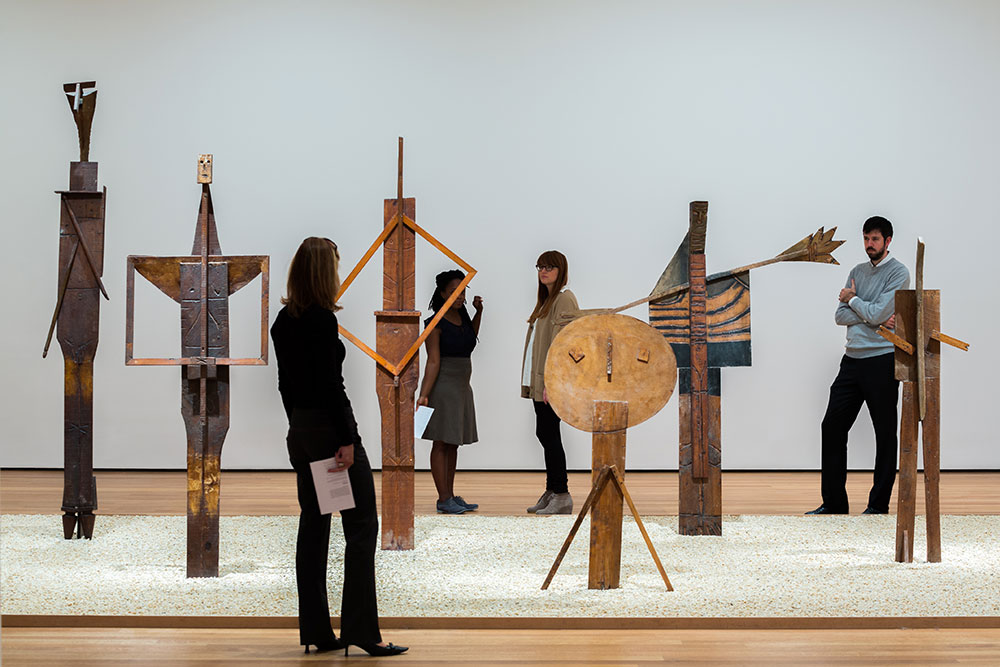The praise for the recent Museum of Modern Art exhibition, boldly but simply entitled Picasso Sculpture, contained one superlative after another. Roberta Smith, writing in the New York Times, asserted of the show that “Many exhibitions are good, some are great and a very few are tantamount to works of art in their own right — for their clarity, lyricism and accumulative wisdom.” Peter Schjeldahl told his New Yorker readers that he felt Picasso was likely “more naturally a sculptor than a painter,” though “all his “training and early experience, and by far most of his prodigious energy, went into painting.” Such claims as these mean that their subject occupies an immense place in the canon of great artists, and a pivotal position in the long stretch of art history. Though known for his nearly stupefying reputation as the master modernist painter, and now also as Picasso the genius sculptor, we need not let his repute become the be all and end all of our ways of looking at, and measuring the weight of, this complex individual (I almost said phenomenon). There have been negative assessments before this; John Berger’s The Success and Failure of Picasso (1965), for example, remains a book well-worth reading. But the amount of laudatory print on the subject, in popular and academic idioms, grows a bit more daunting every year.
What to do about managing this? One response would be to section off the different kinds of Picasso criticism, most of which are beholden to their templates and standards. In art historical frameworks we would look to models of inspiration, records of influence, phenomenological studies, internal patterns in the oeuvre, the exact nature of modernist innovation (where the “invention” of cubism reigns as the virtually inexplicable act of genius). In more popular writing there is the notion of the private life, the telling and retelling of the character and impact of the women he married or lived with, the relations with the poets, the presumed leadership in the bohemian life of Paris, and even the mythologizing of the personality (as in the Brassaï photographs, for instance). This separation into various kinds of criticism happens in any case and in the registers of daily life; every museum bookstore has to decide what titles it will carry and how they will be displayed. When you have become an industry there is no detail too small to be engineered.
Despite many critics striving for a purity of approach, there are cross-overs and blends of interpretive schemes. Working with the classic form of a “Picasso’s life and works” approach can be a standard solution, helped in large measure by John Richardson’s multi-volume biography. Valuable as this study is, however, the advantage Richardson gleaned from knowing Picasso personally can also be a constraint, since an imperious tone and a unilateralizing of Picasso’s imaginative set of symbols and esthetic assumptions takes over bit by bit. Jack Flam and others have intensified their use of the biographical model and are content with (perhaps insistent on) making the succession of the painter’s mistresses the key to all mythologies, every woman equally inspiring a new style. But even with a desirable medley of approaches, one interpretive model supports virtually all of Picasso criticism. This is the famous image of Picasso, the protean genius. No matter what he did by way of innovation and self-enlargement, the man always seemed effortlessly capable of more. The modernist slogan “make it new” seems almost laughably redundant in his case.
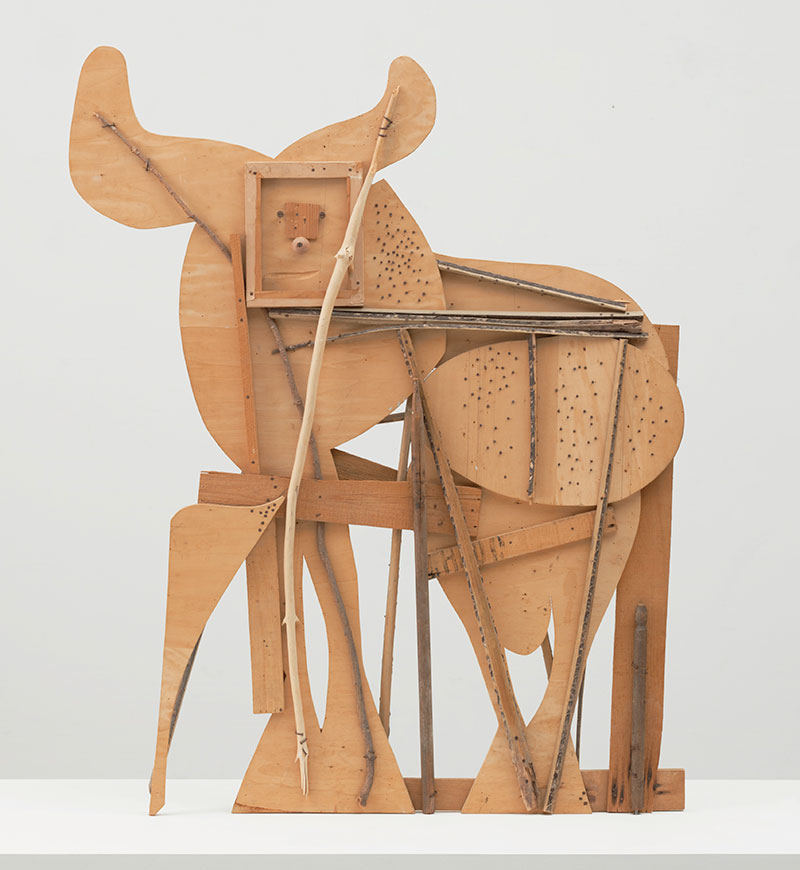
Can or will the common reader have the time and persistence to answer the question: “What exactly is being made new?” The simpler answers have been on offer for a long while. These include explaining the way cubism rejects or redefines single-point perspective, the way symbols such as the bull and the guitar are transmogrified, and the way old masters are resorted to in a dialogue and something like a mano a mano contest for art historical supremacy; all approaches have their day in court, as their outputs are checked for accuracy and convincing results. Notions like “genius” and a “force of nature” often determine or inflect whatever critical strategy commands allegiance and consistency. Picasso once said he didn’t paint what he saw, he painted what he knew. Many comprehend him less as an artisan and more as a magus.
Return for a moment to the Schjeldahl quotation and consider how the word “naturally” is used. All the nurture of Picasso’s early years in Spanish art academies shaped his greatness, but his natural gifts made him an equally great sculptor. This belief supports a body of opinion drawn from the many glowing reviews of “Picasso Sculpture.” Condensed into one synoptic view, what we are now being asked to consider is that Picasso’s prodigious energy and protean vision were able to make a large number of sculptures that had no (or little) precedence and, taken together, form an omnibus of modernist breakthroughs in three-dimensional art making. These breakthroughs by Picasso showed the way for the sculptors who came after him: from Henry Moore to Alexander Calder, from Jean Dubuffet to Giacometti, and from Brancusi to Louise Nevelson. It was as if, like Shakespeare, he made art beyond any rules and like nature itself he had to be looked at if any nurture were to become nourishing.
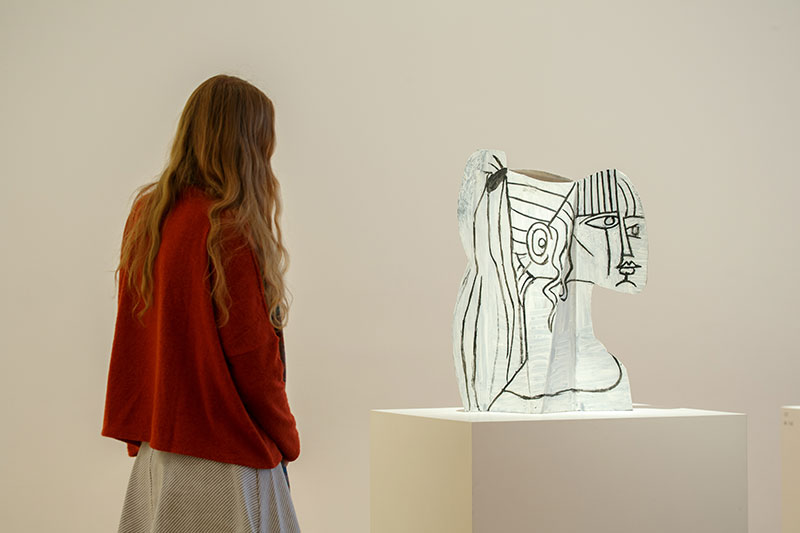
The natural maker had an instinctive relationship to materials. He could use wood, welded steel, household utensils, a bicycle seat, even cast bronze (though he claimed to find it too elitist). Found objects came to him as readily as if it were he who made the urinal based “Fountain” by which Duchamp changed almost everything about sculpture — and art itself, for that matter. He turned an absinthe cup into a daring dance of curves and textures, painted with elan and whimsy. There were several portraits of women made in plaster, one of which, “Bust of a Woman” (1931) is currently the focus of a legal contest. Part of the evidence in that proceeding concerns whether the sale price of the woman’s head was 50 million dollars or 106 million. Another similar plaster portrait is called “Head of a Woman” (1932); it possesses no more grace than its predecessor, and could probably one day fetch a similar price. An artfully sawn sheet of thin wood resembles a bull more convincingly that a corporate logo. A fragile paperboard, paper, and string come together in “Guitar” (1912), which shimmers as it sheds its solidity and echoes the strategies of cubism. The total set of 140 sculptures embody a rainbow of ideas and a cornucopia of ideas about shape, volume, texture, heft, and a dozen other qualities. They filled the fourth floor of MoMA but there was enough unused space so one could walk all around every free standing piece. The curators, Ann Temkin and Anne Umland, used their catalog essay to argue for a purely sculptural vision for Picasso, abjuring any programmatic relationship to his paintings and his life story. This approach was echoed in most of the reviews of the exhibition. Perhaps one could be forgiven for a slightly guilty pleasure in not having to relate the sculpture to all the several urgent critical paradigms that Picasso literature has fostered.
Jerry Saltz, in New York Magazine, put forward as strong a claim as is possible for Picasso the sculptor. “Above all, this show lets you know in your bones that beneath it all, Picasso’s art was always sculptural — always structural, architectural, and tectonically imagined first.” Taken at face value, we must credit Picasso not only with a visual but with a structural — or sculptural — imagination the equal of few other artists. Moving from a structural vision to a sculptural one becomes a way Picasso’s cubist revolution can be redoubled, making him beyond normal measures. Sculptural imagining treats volume in a literally tactile way. It adds a dimension to structure that changes our sense of bodily time, as we can or must walk around the work and so not only traverse space but experience time. This is how some critics have linked Picasso and Einstein’s relativity. But what we know of Picasso’s self-understanding doesn’t arouse the suspicion that he was working out the sort of problem that troubled the founders of relativity and quantum mechanics. As in the famous quote from W. H. Auden, “How do I know what I think until I see what I say?”, the questions about discovery are either untranslatable or else they involve so many other contexts and concerns that they would require as many fractionations as notes available in a guitar string.
In his review in Artforum, Hal Foster critiques the plaster sculptures of the early 1930s, a period when Picasso and his then-mistress, Therese Walter, were scandalizing some friends by living together as an open secret at his sculpture studio in Boisgeloup, outside Paris. Picasso was struggling with and against the specter of being overly influenced by Surrealism:
Some of the Surrealist sculptures produced at Boisgeloup are fantastic — almost Ovidian metamorphoses of his mistress Marie-Thérèse Walter — but the penis-as-nose or breast-as-head operation is not a feat of transgression so much as “a game of transposition” (the phrase Bataille used to critique sublimatory moves in Surrealist art); repeated too often, it becomes a heavy-handed joke … these sculptures sometimes seem like semisadistic stunts.
Since I have always found the famous 1931 sculpture of “Bust of a Woman” somehow offensive and just plain ugly, I take great comfort in Foster’s argument. The spirit of Foster’s review strikes me overall as the best negative corrective to the hyperbole of most other critics and reviewers of the sculpture show; his argument is a faint echo of — but a stronger case than — that made by Berger years ago (which did not take the sculpture into account). Foster says that with Picasso “it is difficult to distinguish clearly between research and resolution, minor and major (sometimes a tentative experiment in a new material appears later as a confident statement).” Of course some will argue that the wastefulness of his talent makes little difference in the long run since figuratively he has talent to burn. And if he redeemed an early mistake with a later triumph, so much the better.
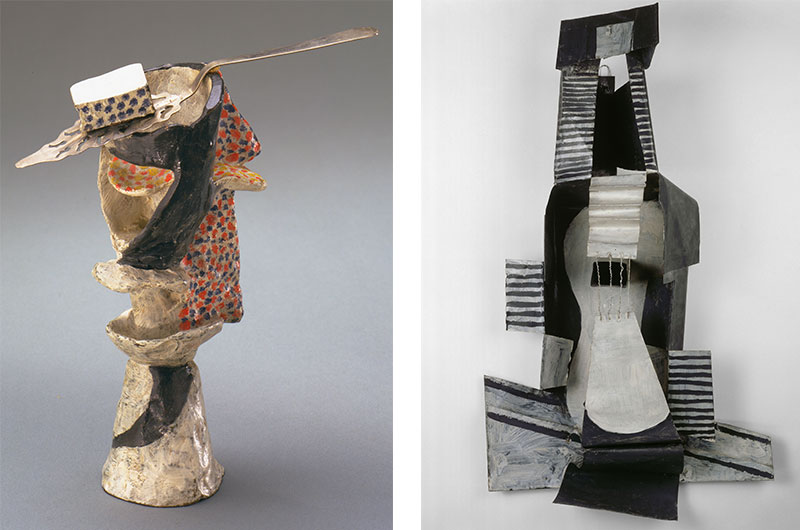
Right: Pablo Picasso (Spanish, 1881–1973) Guitar Paris, 1924 Painted sheet metal, painted tin box, and iron wire 43 11/16 × 25 × 10 1/2 in. (111 × 63.5 × 26.6 cm) Musée national Picasso–Paris © 2015 Estate of Pablo Picasso/Artists Rights Society (ARS), New York
Perhaps it may be necessary for a while to let the hyperbolic praise of Picasso carry the day. Maybe, the 140 sculptures will wear their pedigree lightly, and will be traced back to “Les Demoiselles” and “Guernica,” which will be best known and loved as a refrigerator magnet or seen only from behind an iPhone lens, like da Vinci’s “La Giaconda.” The unflinching commercialization and media celebration of an artist as famous as Picasso strikes some as a fearsome thing. But many people will be stopped in their tracks when they see the one Picasso sculpture that matters most, the one he apparently tossed off with insouciance that day when he wasn’t thinking about plinths or lost wax or volumetric harmony.
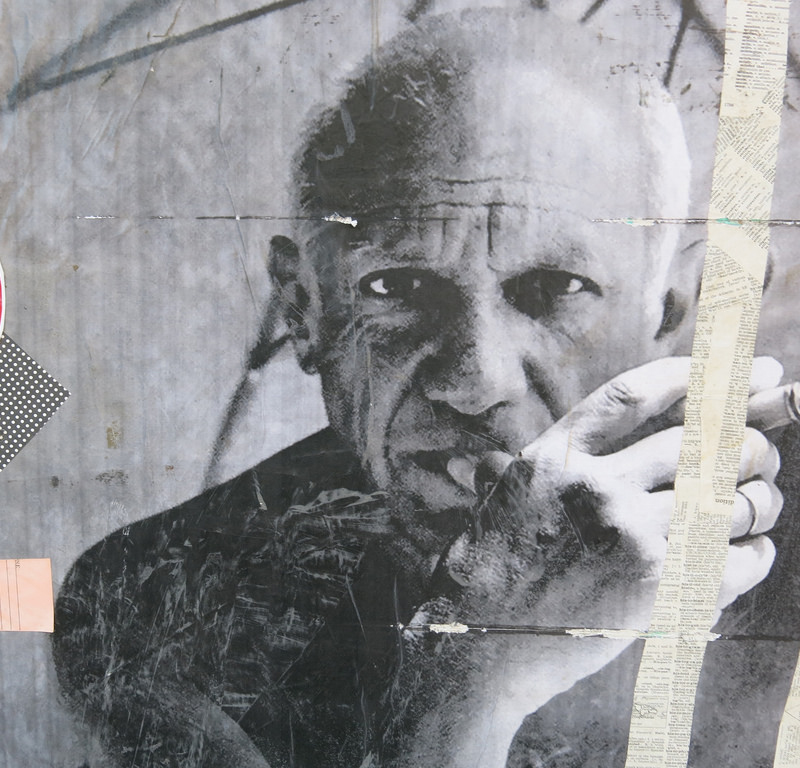
Finally, Picasso could be regarded as just another artist if, and only if, one takes into account all the myriad of artists who collectively stand for and work for the irreducible persistence of impractical making and unlimited looking. The mythic power credited to the protean genius became, over Picasso’s life span of nine decades, its own limitation, for the drive he had to make things served in a way to make him heedless at times of his own needs and plans, not to mention those of many around him. In many ways, it is one of the greatest of natural powers to be able to shape or reshape a personal order of meaning, as Picasso obviously did. Still, even greater — despite the concomitant burden — is the power to decide for oneself and to convince others just what the power consists of and who best to use or harbor it. Is it to be found in a single artist, or in the shared powers of the maker and the viewer? •
